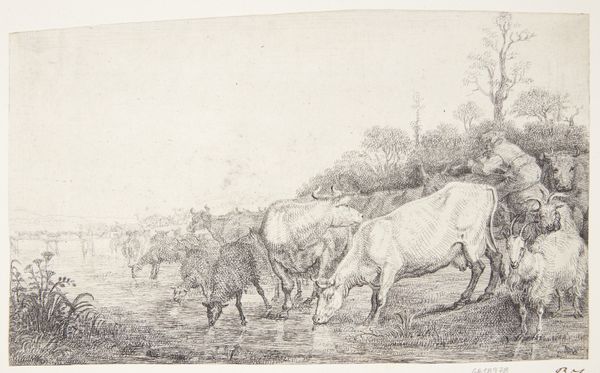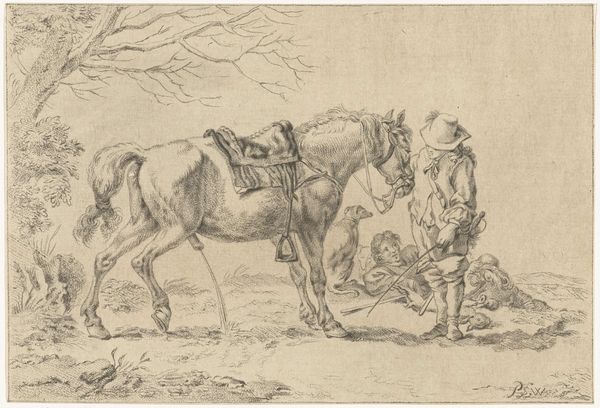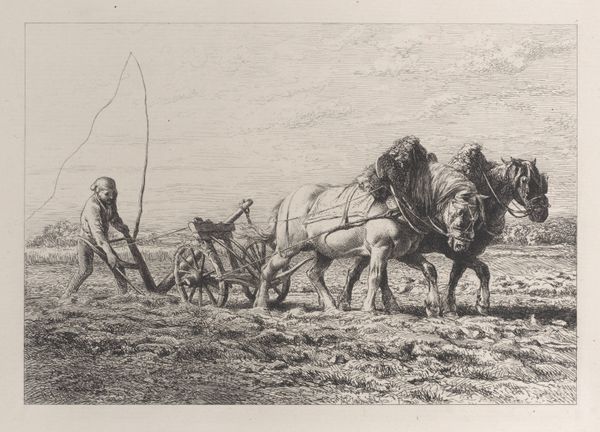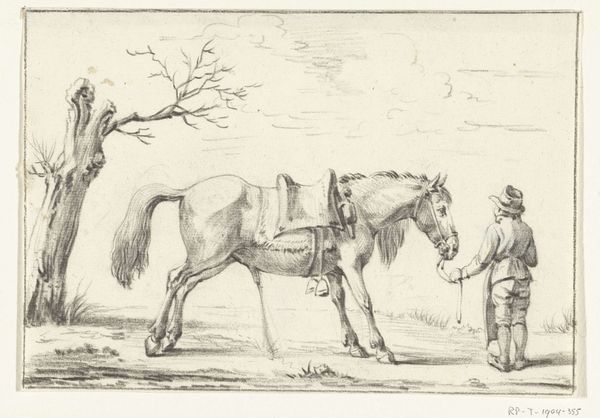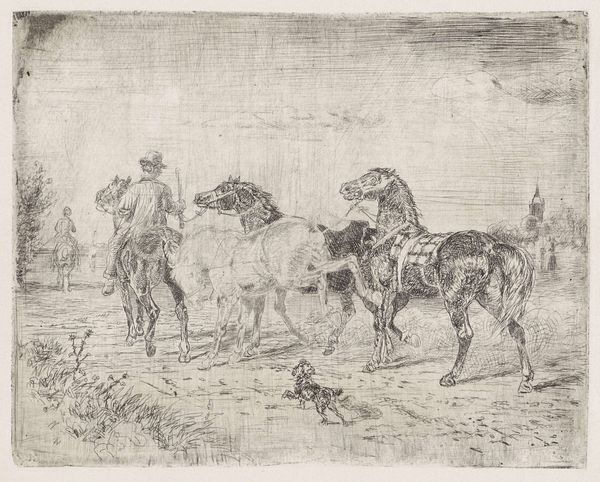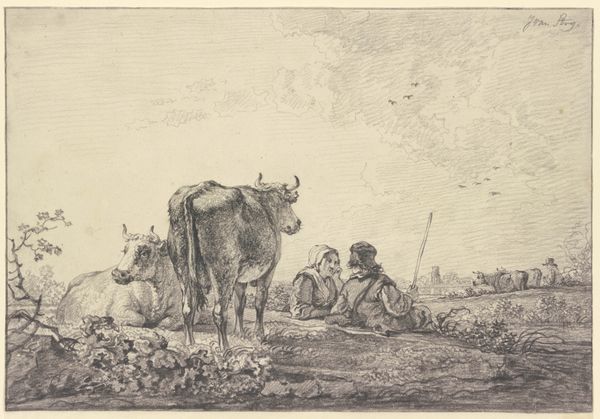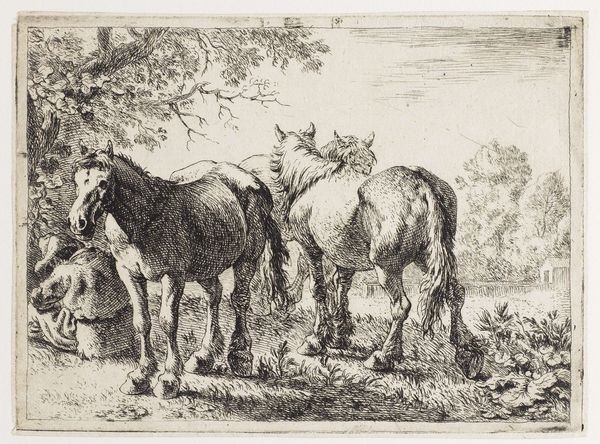
print, etching
#
dutch-golden-age
# print
#
etching
#
landscape
#
genre-painting
Dimensions: 140 mm (height) x 236 mm (width) (bladmaal)
Editor: This etching, "En hjord drives frem," or "A Herd Being Driven Forward," by Gerrit Claesz. Bleker, likely created sometime between 1592 and 1656, is quite captivating! The scale is relatively small, but the scene it depicts feels so expansive. I'm curious, what strikes you most about this piece? Curator: Well, first, the choice of etching is important. Printmaking, particularly during the Dutch Golden Age, meant accessibility. Consider how this image would have been produced: a copper plate, acid, ink, paper, and the labor to create and distribute it. This wasn't some inaccessible oil painting only viewable by the wealthy elite; it circulated, engaging a wider public with pastoral imagery and genre scenes, even across social lines. Editor: So, you're saying the very nature of the print affects our understanding of the artwork itself? Curator: Exactly. It makes us think about production. Bleker isn’t just showing us a romantic landscape; he’s demonstrating the availability of such images, manufactured objects designed for consumption. Notice, for example, how labor is subtly presented in the form of the man goading the herd onwards, while another figure appears relaxed, perched comfortably on horseback, seemingly directing labor. There is perhaps some critique of power embedded here, too. Editor: That's a perspective I hadn't considered. I was caught up in the idyllic nature of the scene, the details of the animals and landscape. Curator: It *is* beautiful, but beauty can be strategically produced, like any other object. And consider, what fueled this burgeoning art market of the Dutch Golden Age? The immense wealth generated by trade and, yes, exploited labor, which then filtered through the consumption habits of all levels of society. Editor: So the subject matter, a simple herding scene, almost hides the complex system of labor and materials that brought the artwork into existence. Thank you for revealing that deeper level. Curator: Precisely. It shows how something that appears simple is, in fact, the result of complex social forces and systems of material production.
Comments
No comments
Be the first to comment and join the conversation on the ultimate creative platform.
